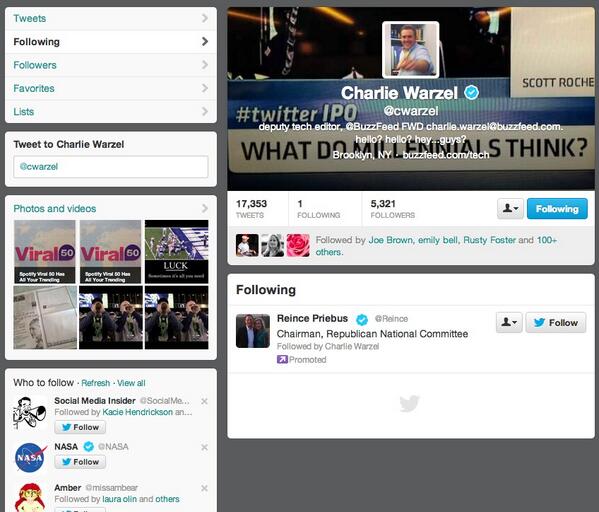
Journalists
take photos of a Panasonic television with Panasonic “Life Screen”
technology during the 2014 Consumer Electronics Show (CES) in Las Vegas,
Nevada, January 6, 2014. Steve Marcus / Reuters
In the span of three years, Vizio has become the most important company in television. And this year, with zero fanfare, it got rid of 3D TVs across its current product line.
Vizio’s
decision appears to be a unique one; 3D is still found in a large share
of 2013’s most popular televisions, and will be present in many of
2014’s models, too. But it makes explicit what TV manufacturers have
been gradually coming to terms with over the last two product cycles, as
evident in their increasingly subtle marketing of 3D televisions: 3D
wasn’t just a failure — it has become a liability. Panasonic, which admitted a year ago that its massive 3D push “hasn’t really worked,” has largely disappeared the feature from its new lineup. About 90% of Panasonic’ s 2013 range had some sort of 3D feature. Its 2014 lineup, announced today, has either substantially dropped 3D support or made it a secret: of its 14 new TVs, just three is branded as 3D.
CES 2010 was all about 3D TV, as was CES 2011. The next year, the industry’s hangover was setting in — by CES 2013, 3D had become fully commodified. It was included in TVs and simply listed as a feature. It was there because it had no reason not to be, not because anyone was asking for it.
In 2014, however, manufacturers are beginning to wonder if 3D is even worth an afterthought. Aside from the requisite glasses-free 3D demos (this year dominated by Dolby, in cooperating with multiple companies including Vizio), it has been largely banished from the big-name displays at CES. In big box stores around the country, its retail presence has been reduced to small stickers on display sets. When, for example, was the last time you saw a commercial featuring a family gathered around a sleek set donning a pair of clunky 3D glasses?
Elsewhere in the electronics industry, 3D’s vital signs are equally grim. Enthusiasm for 3D smartphones died before ever gaining traction. Sony, which almost singlehandedly promoted mainstream 3D gaming with a slate of PlayStation 3 games and even a PlayStation branded gaming monitor, not to mention its TVs and cameras, didn’t bother to include 3D support in the PS4, at least at launch. (It’s not present in the Xbox One, either.) 3D Blu-ray releases promise less and less each month; the calendar is clogged with no-name films and 3D remastered cash-ins. Avatar, released in 2009, amazingly, is still the best example of a modern 3D film.
Vizio’s decision to eliminate 3D entirely points to an unexpectedly sad fate for the feature, once heralded as the savior of an industry that has seen its margins shrink more and more by the year as unfamiliar “good enough” brands have appeared in stores, unflatteringly, alongside decades-old prestige brands. Vizio seems to be betting that 3D isn’t just seen as unnecessary, but as a waste and a potentially harmful bit of marketing. A TV with a 3D feature that you’ll never use is a TV that you feel like you’re probably paying too much for.
Rather than becoming a cheap standard feature on every TV, like motion-smoothing or surround sound, it’s possible 3D may be erased from the TV industry’s narrative entirely, at least until someone figures out a better way to do it.
CES, where 3D burst onto the stage, is the perfect place for its funeral.
Update: A Dolby rep emails: “To clarify, Vizio will continue to pursue glasses-free 3D technology, in collaboration with Dolby and Dolby 3D; Vizio is showcasing a Dolby 3D display at CES this year.”








































